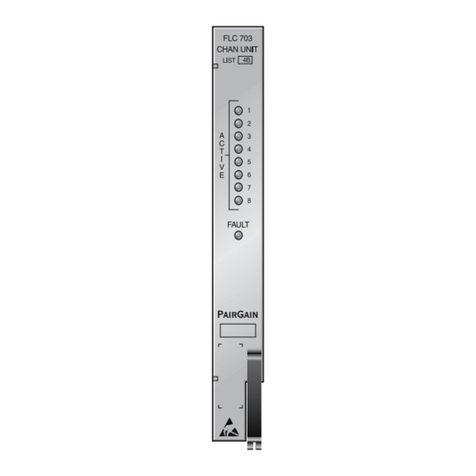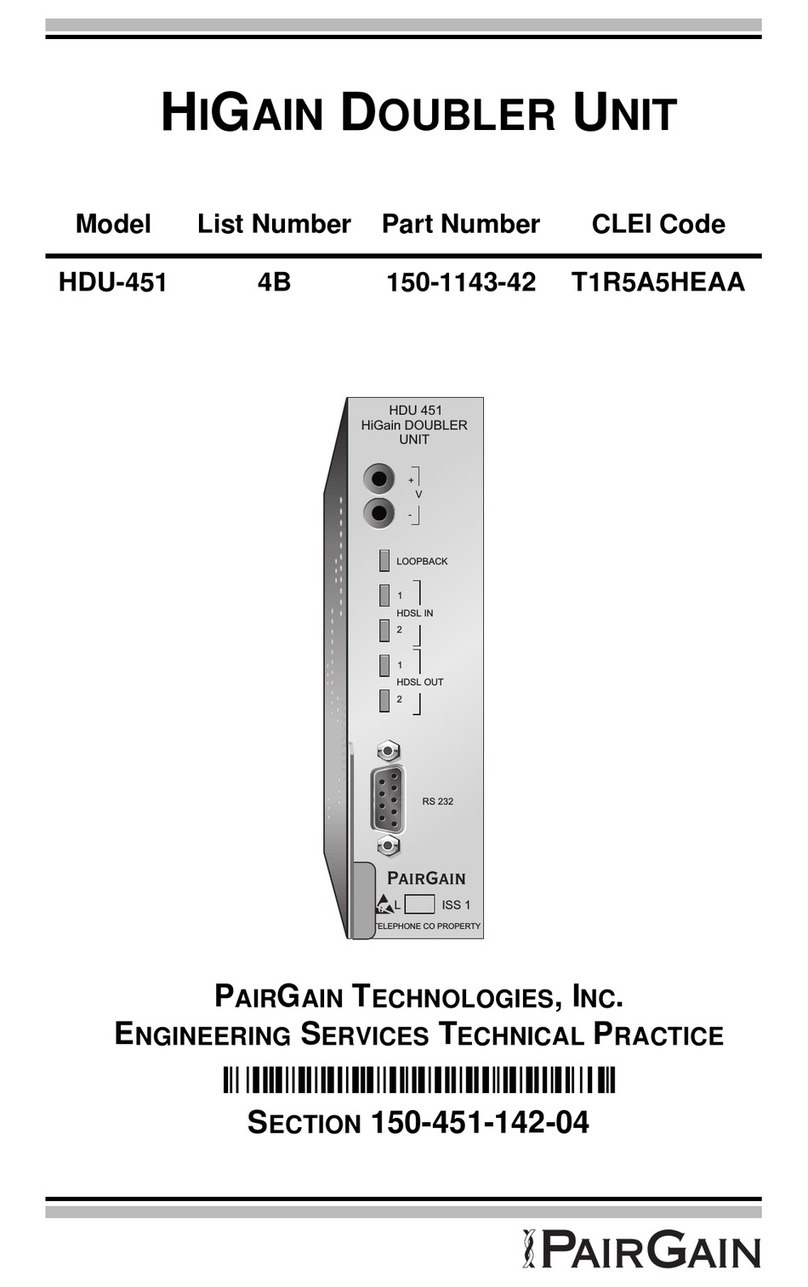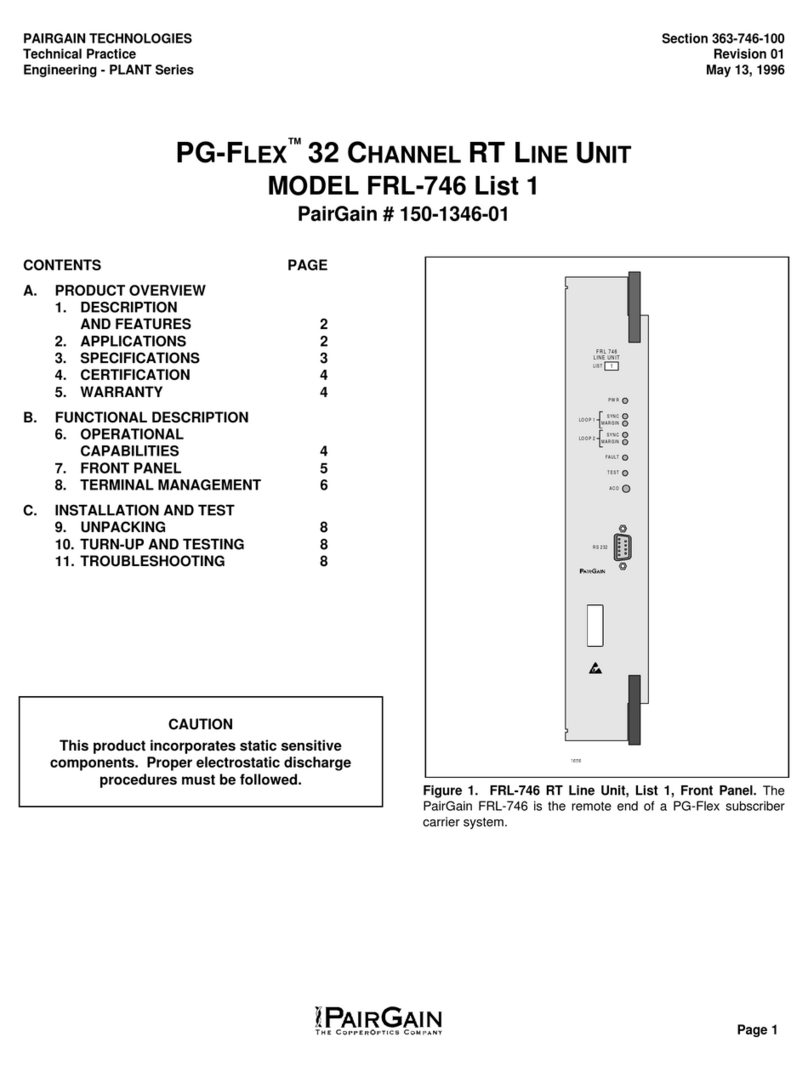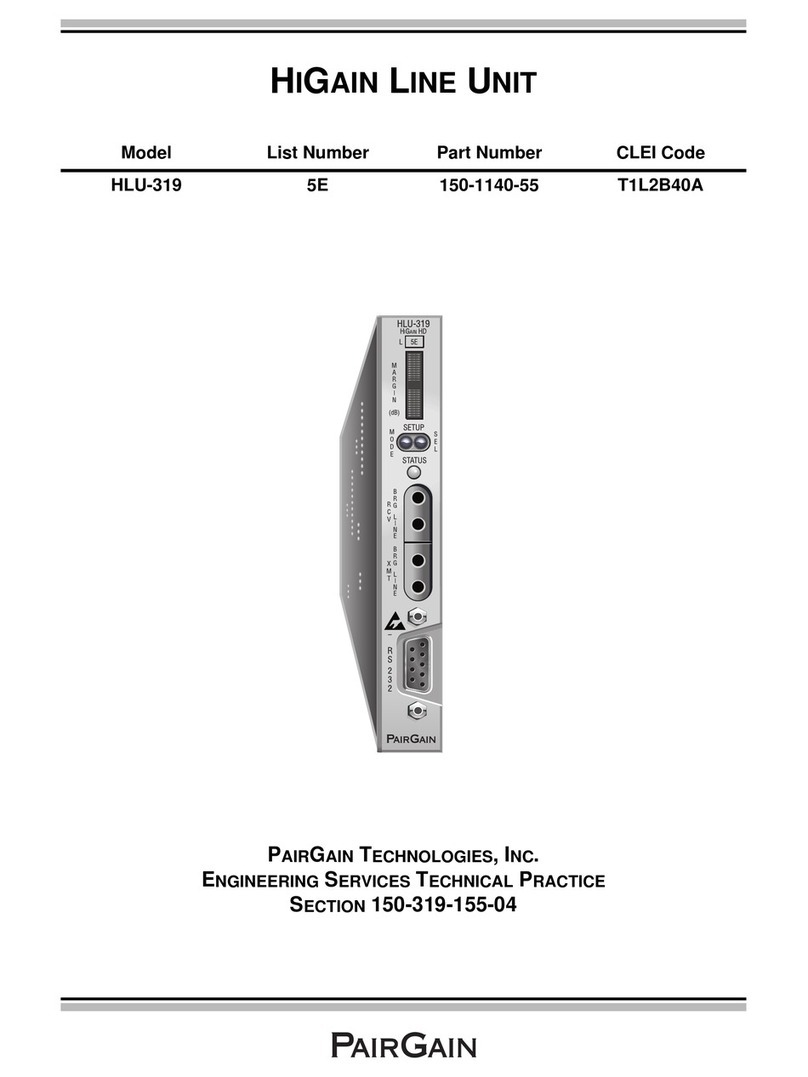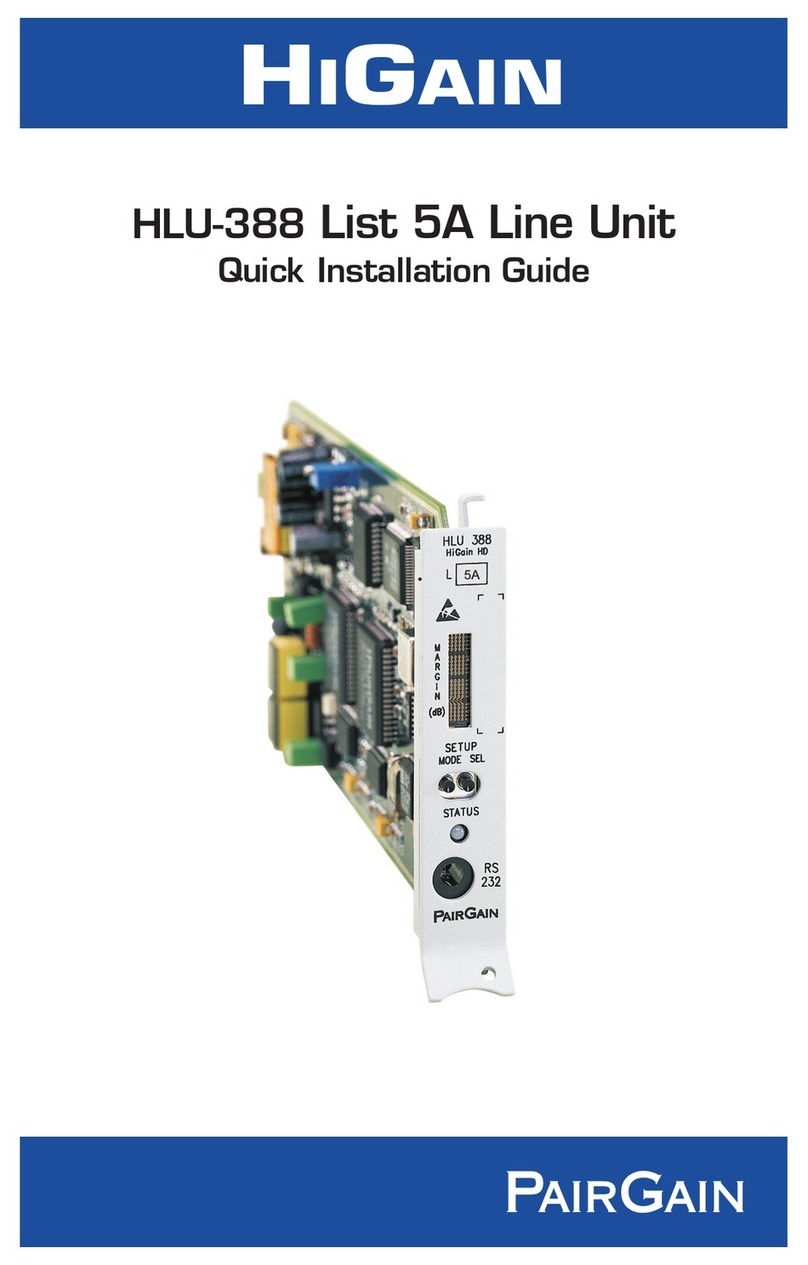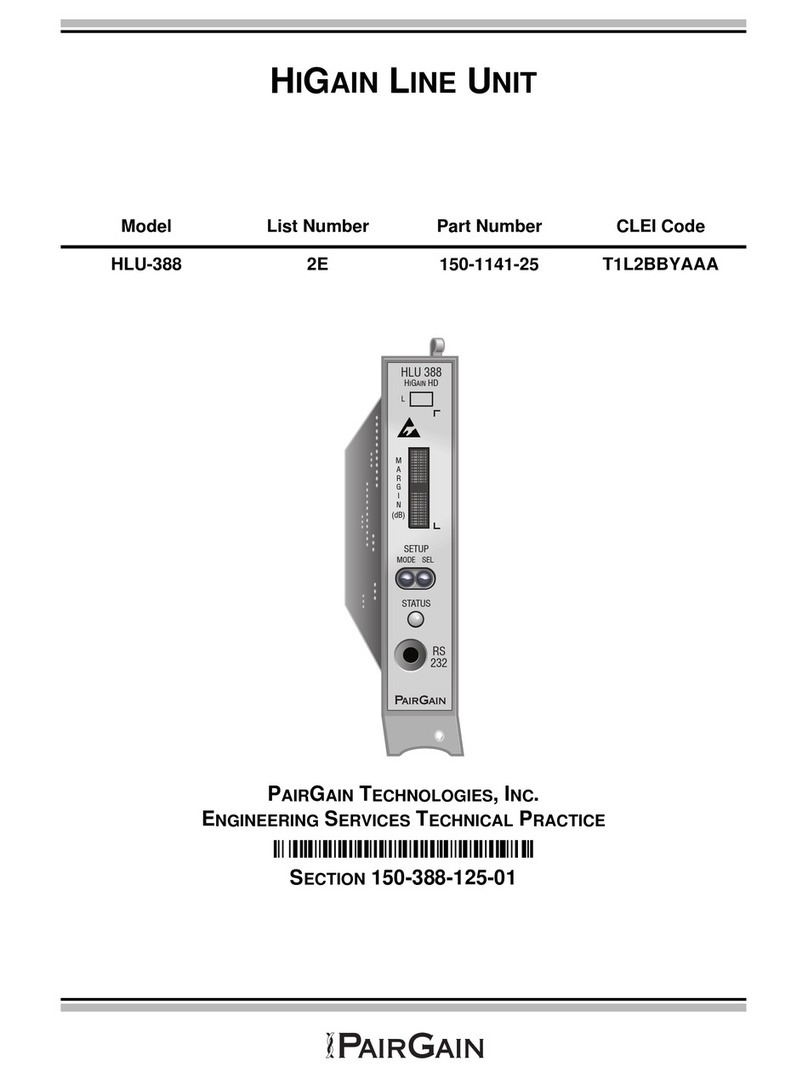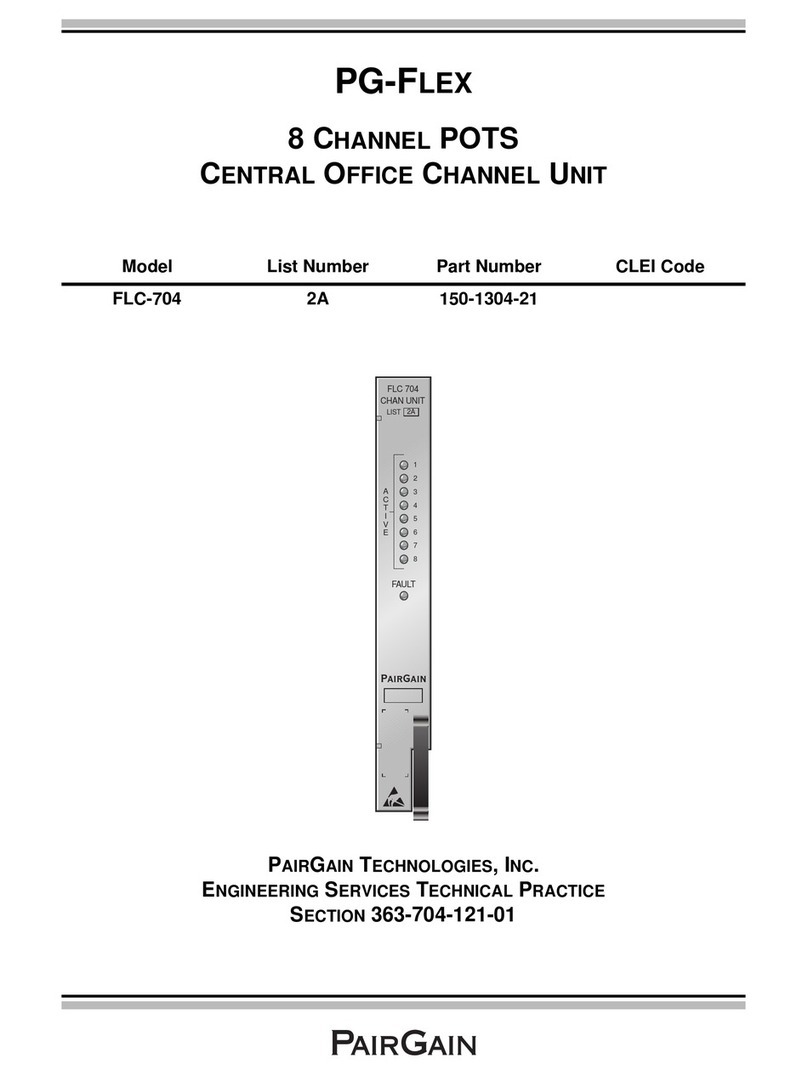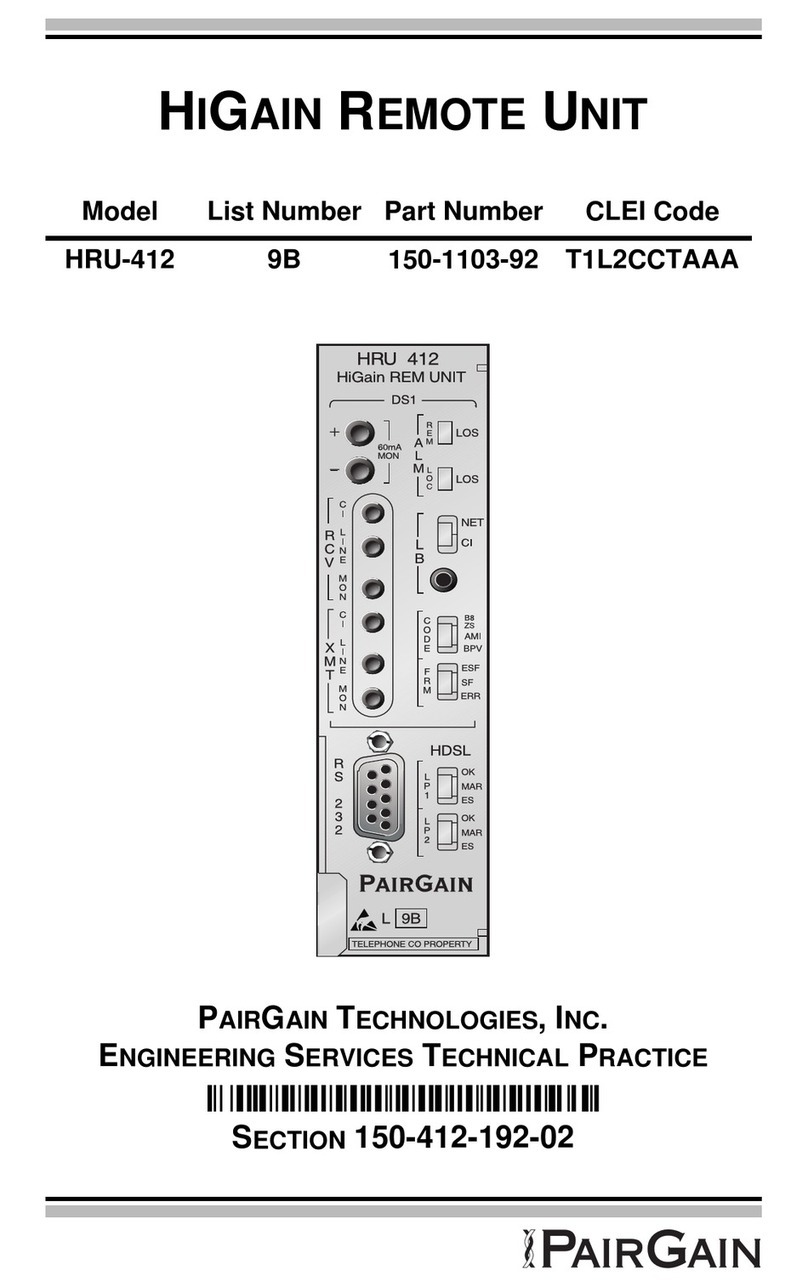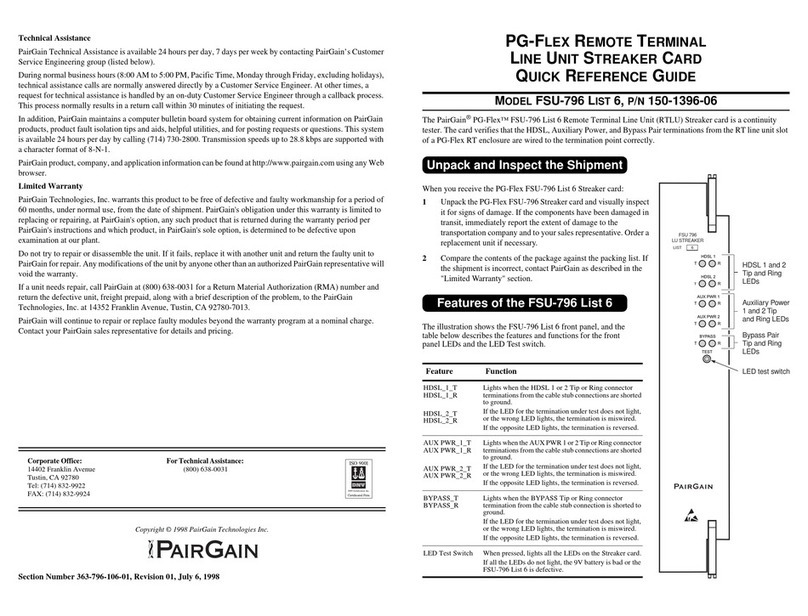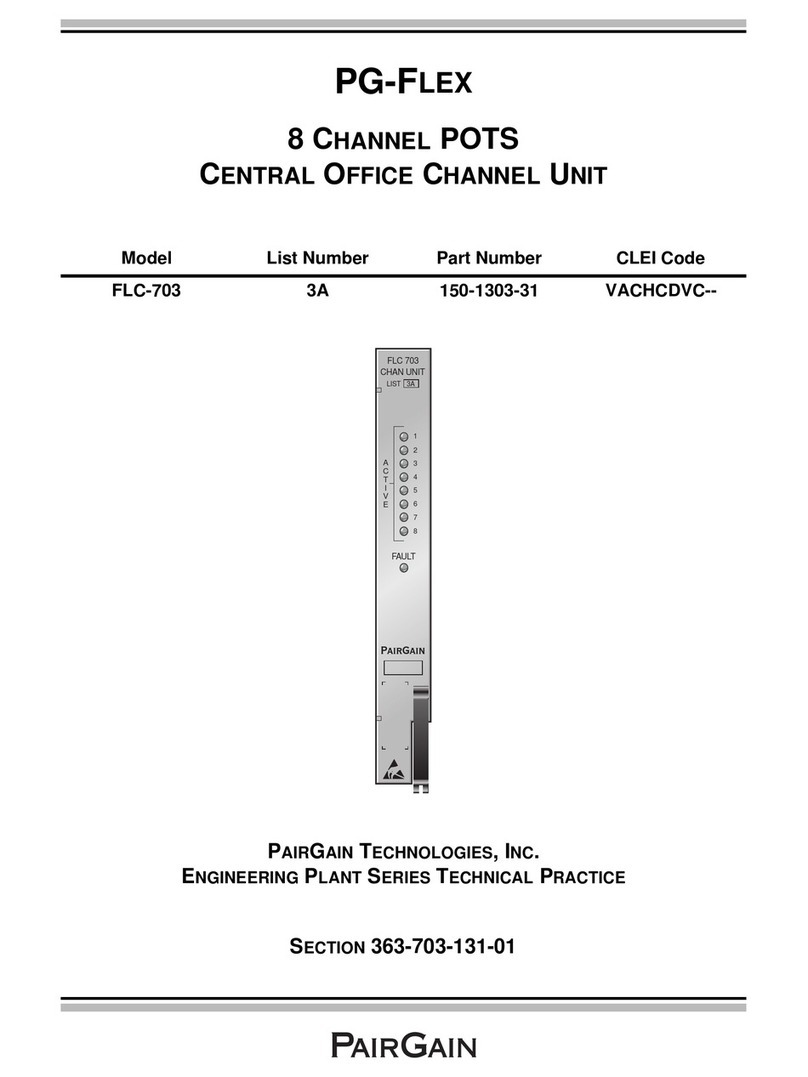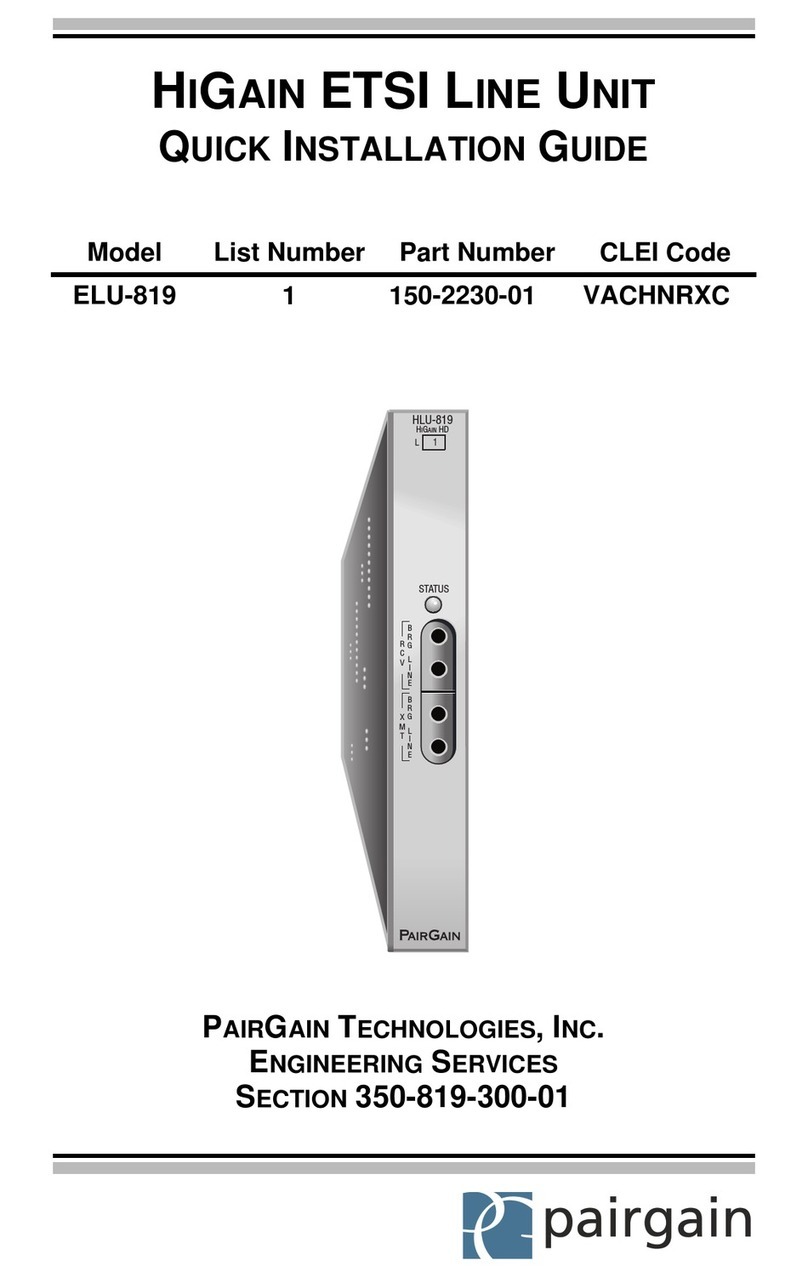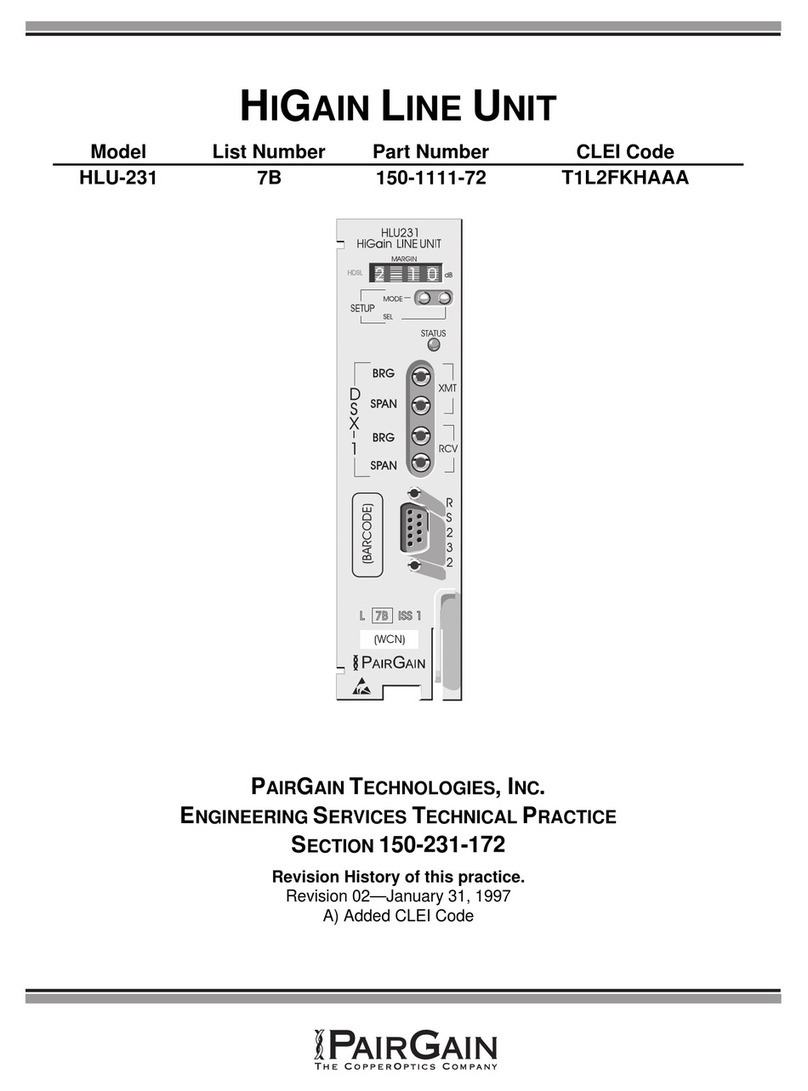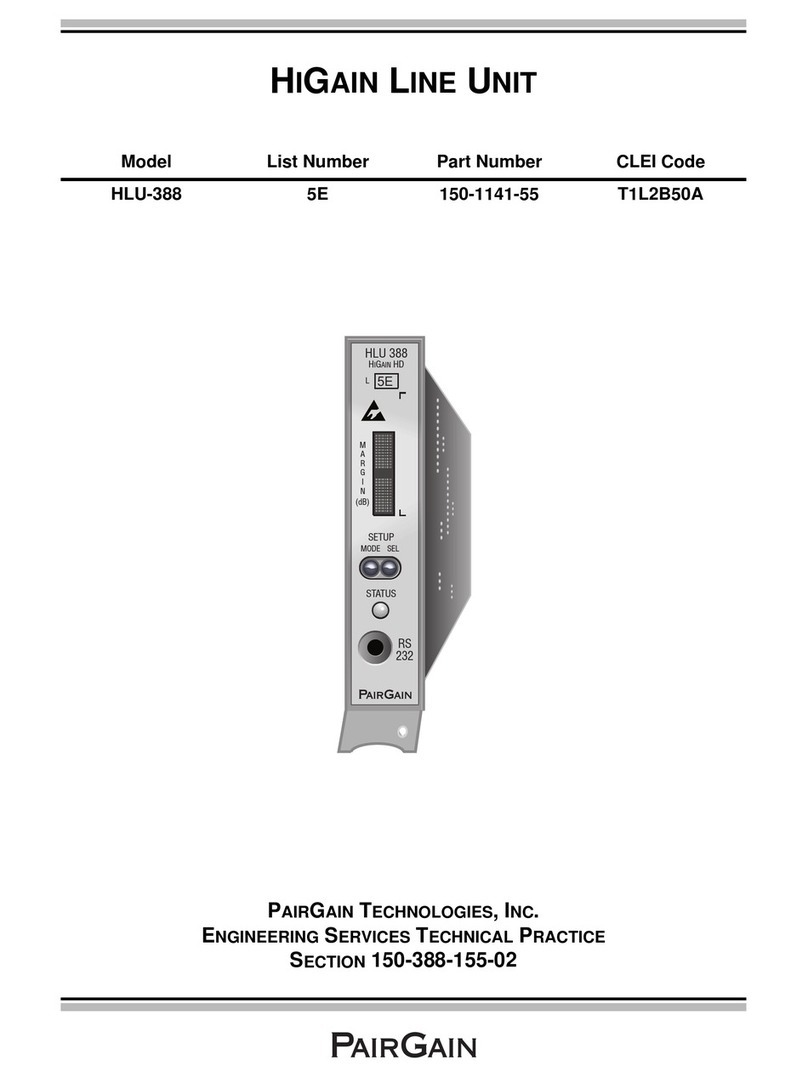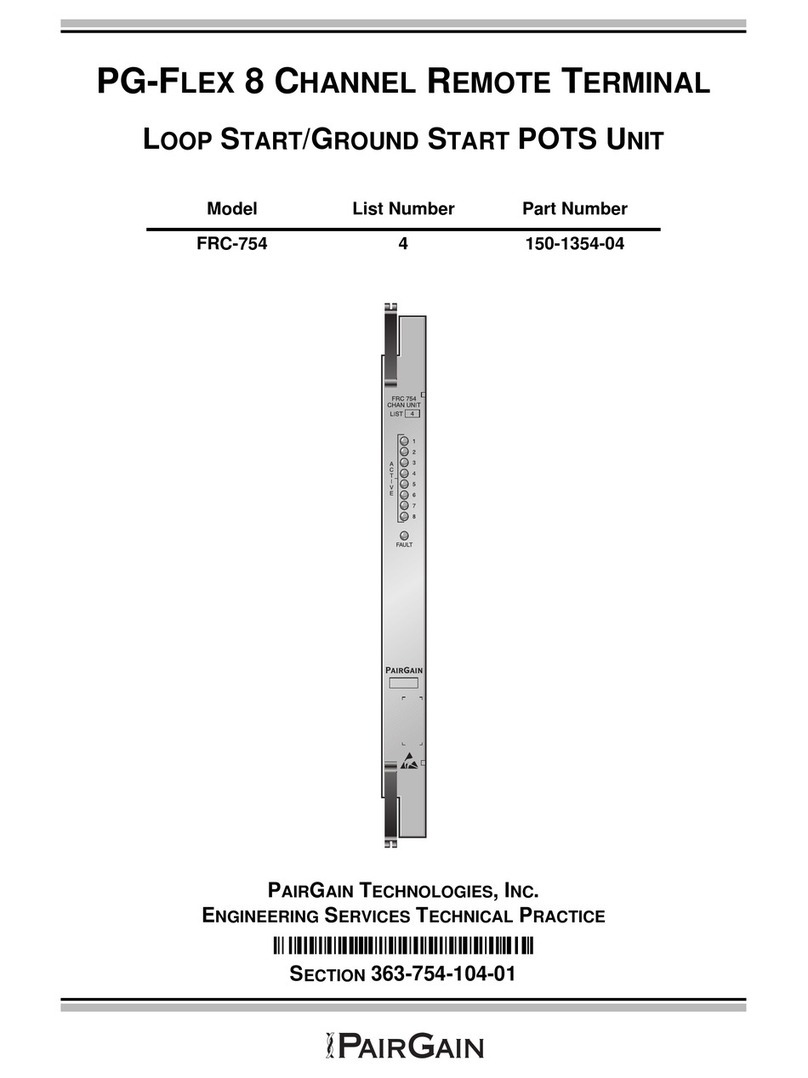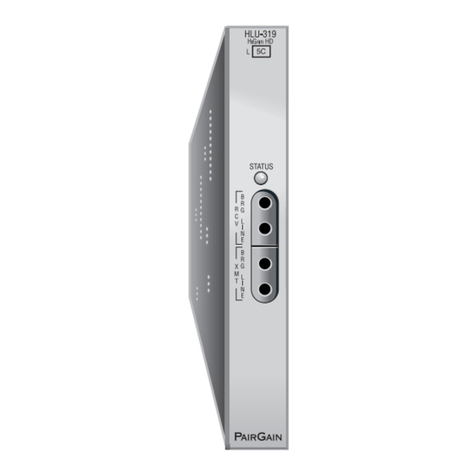
Section 363-751-100
Revision 01
Page 2
A. PRODUCT OVERVIEW
1. DESCRIPTION AND FEATURES
1.01 The FRC-751 Channel Unit provides four POTS
interfaces between a PG-Flex Remote Terminal
(RT) and subscribers. The FRC-751 Channel Unit uses µ-
Law PCM encoding. The unit includes status LEDs for each
line indicating idle, ringing and off-hook conditions, as well
as an LED indicating a fault condition on the Channel Unit.
The unit provides metallic test access to the subscriber line
for connecting through an optional metallic bypass pair.
1.02 Revision History of this practice.
Revision 01 - February 12, 1996
a) Initial release.
1.03 Features of the PG-Flex FRC-751 RT Channel Unit:
• Four POTS subscriber interfaces
• 64 kbps µ-Law PCM encoding
• Front panel ACTIVE LEDs indicate idle, ringing,
and off-hook conditions for each channel
• Front panel FAULT LED indicator simplifies
troubleshooting
2. APPLICATIONS
2.01 PG-Flex is a small capacity universal subscriber
carrier system supporting up to 24 subscriber
channels, including POTS and ISDN services. The system is
based on HDSL transmission technology and the remote
power is powered from the central office. Using two 24
gauge unconditioned copper pairs, the remote terminal may
be located up to 12.3 kft from the central office terminal.
Standard 19- or 23-inch shelves contain multiple systems;
circuit cards may be hot-swapped without affecting other
systems installed in the shelf. POTS channel units use 64-
kbps µ-Law PCM encoding to allow Group 3 facsimile or
high-speed modem operation on all channels.
2.02 System Flex Configuration. A PG-Flex system,
shown in Figure 2, consists of:
• Central Office Terminal (COT). Two complete
systems may be installed in a 19-inch COT
Shelf and four complete systems may be
installed in a 23-inch COT Shelf. Each system
requires one COT Line Unit and up to three (23-
inch shelf) or six (19-inch shelf) Channel Units.
A common Alarm Unit or Pair Gain Test
Controller Interface Unit in each shelf provides
an interface for maintenance alarm relays and
metallic access to the remote subscriber lines.
• Remote Terminal (RT). The RT Enclosure
provides a weatherproof housing for the
PG-Flex remote electronics and subscriber
terminations. The enclosure accepts one
common RT Line Unit and up to four Channel
Units. The Remote Terminal communicates
with, and is line-powered from, the COT over
two pairs of 19- to 26-gauge twisted-pair
telephone wire. Each pair carries both power
and HDSL signaling.
2.03 HDSL Transmission. PG-Flex utilizes HDSL
transmission technology between the COT and RT
and provides up to 24 DS0s, plus signaling, over two copper
pairs without the need for repeaters, loop conditioning, or
pair selection. Adaptive equalization, scrambling, and a four-
level 2B1Q line coding scheme increase range and minimize
crosstalk.
2.04 The line interface is a two-pair, 784-kbps full-
duplex 2B1Q transmission format. The dual HDSL
lines provide 24 64-kbps channels with signaling, and an
embedded operations channel for management control. The
signal characteristics on the carrier pairs comply with TR-
NWT-001210, Generic Requirements for High-bit-rate
Digital Subscriber Line (HDSL) Systems.
2.05 For the system configuration depicted in Figure 2,
the maximum distance between the COT and the RT
is 12.3 kft (3.8 km), assuming the HDSL lines are 24 gauge.
Table 1 shows the maximum distance between the COT and
RT for various gauge wire. Due to the nature of HDSL
transmission technology, the HDSL lines do not require any
special conditioning and may include unterminated bridge
taps, but cannot include load coils.
2.06 Subscriber Drop Testing. For subscriber drop
testing from the central office, PG-Flex is able to
select and connect any subscriber drop to a metallic test pair
at the RT. PG-Flex extends this connection back to the COT
where technicians can switch it onto a test access bus, or to
the corresponding subscriber line on the COT channel card.
2.07 Test access is achieved by placing +116 V on the
subscriber’s COT tip lead for 1.5 seconds, then
removing the +116 V. Depending on the configuration of the
PG-Flex system, the selected subscriber drop (assuming a
working metallic bypass pair) will be connected to either the
corresponding COT subscriber line or to the test access bus.
2.08 The test connection will be dropped when -116V is
applied to the subscriber’s COT tip for 1.5 seconds,
then removing the -116 V.
2.09 Test access may also be activated through the RS-
232 Maintenance Port located on the front of the
COT and RT Line Units, using an ASCII terminal.
